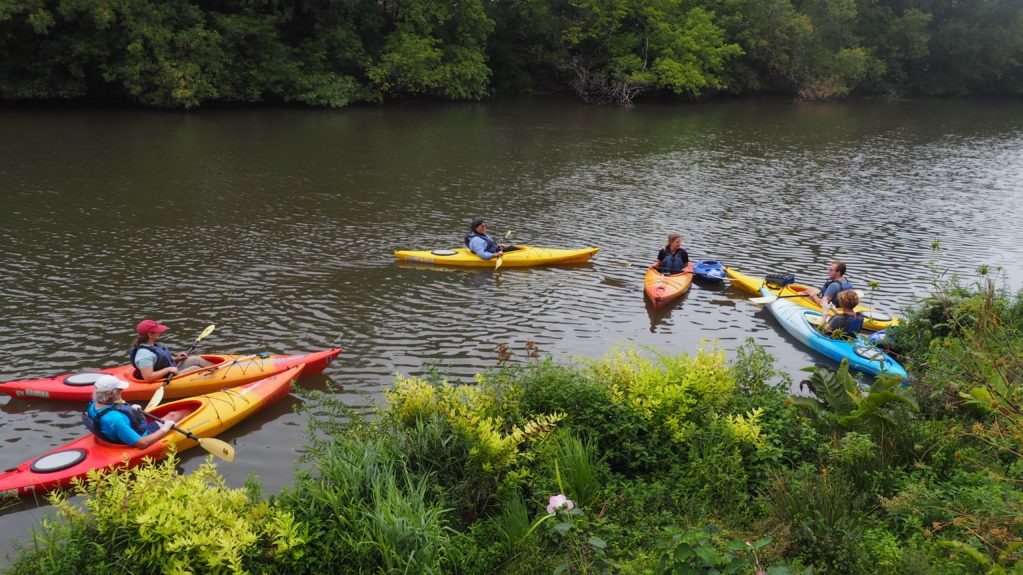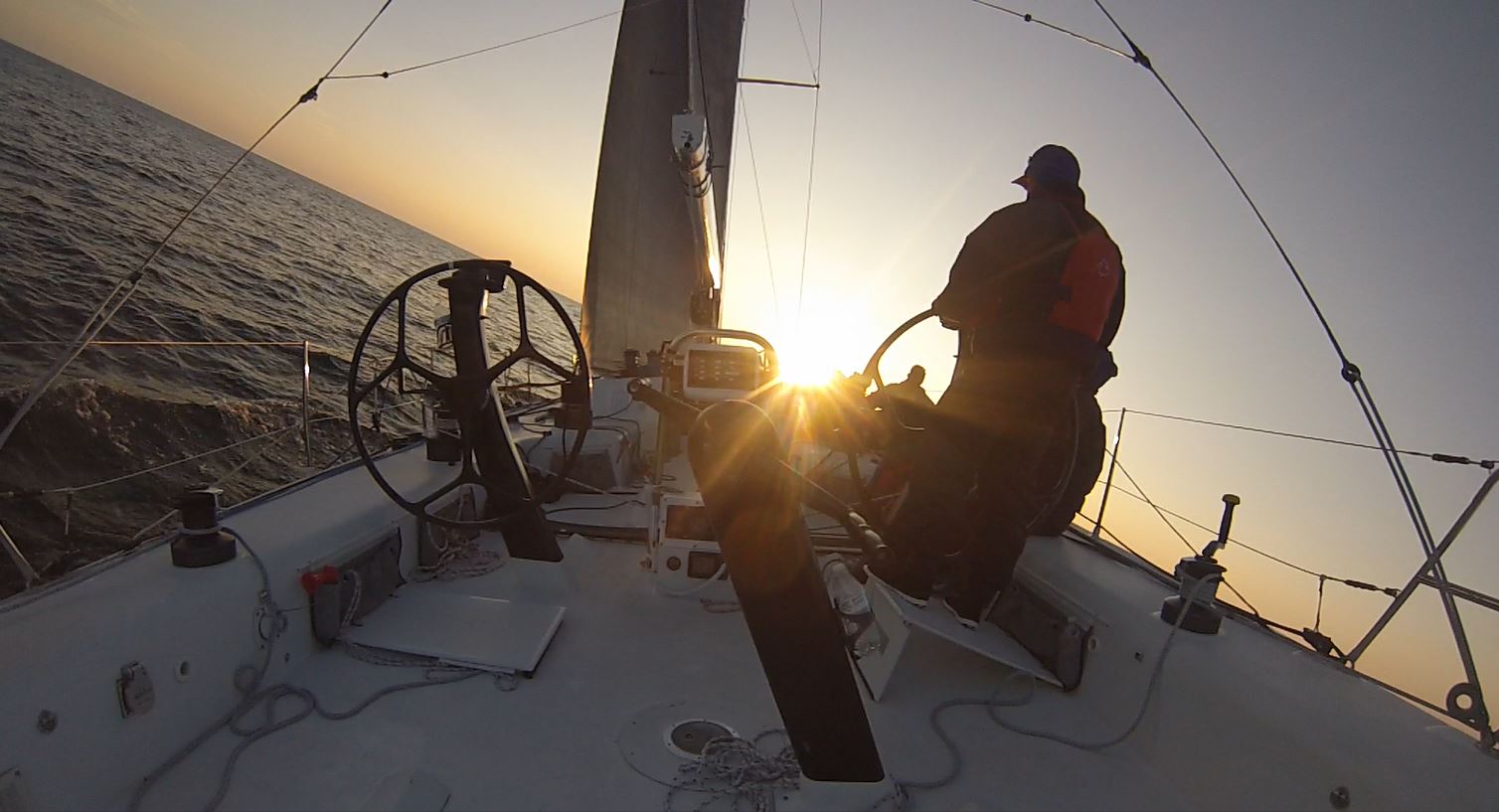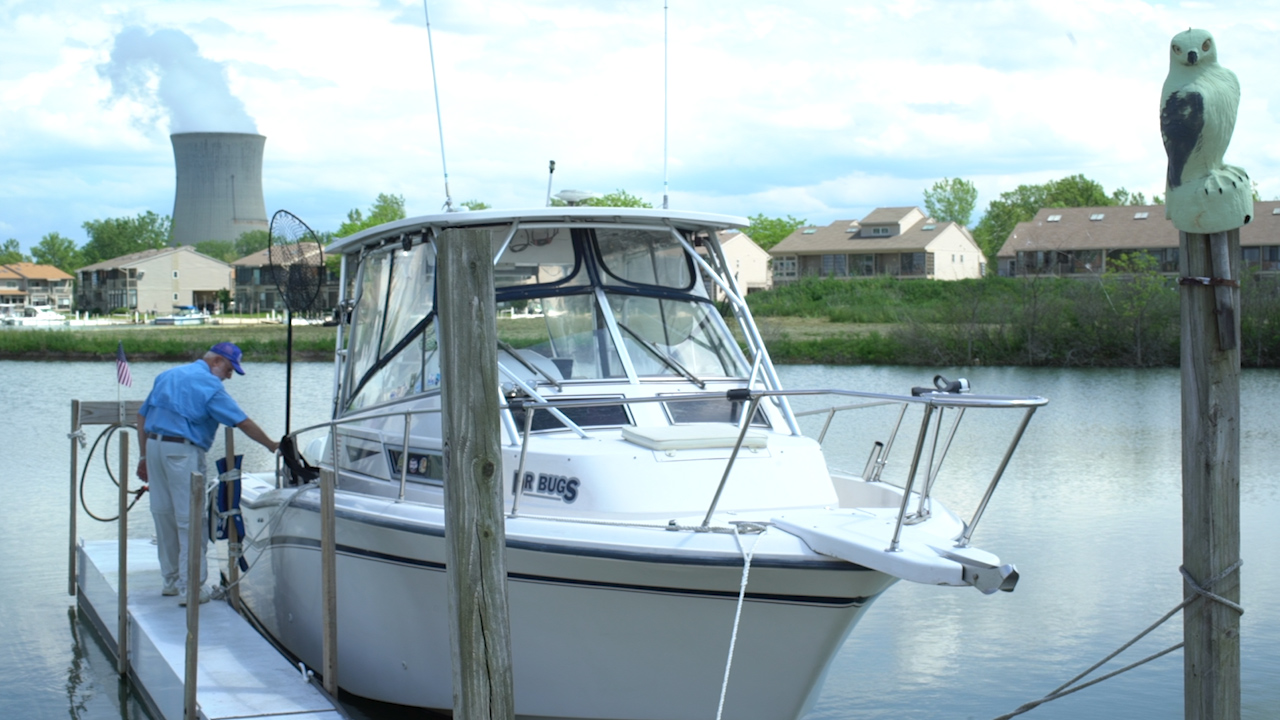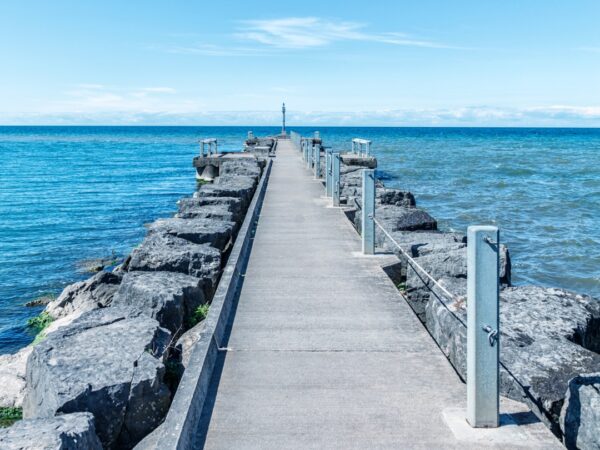
The Great Lakes are great for many reasons – their economic power, the lifestyle they provide millions of residents, as a getaway for tens of millions visitors and the livelihood it offers hundreds of thousands in lakes-related industries.
And then there’s the water. Summer sees the lakes filled with people soaking, swimming, skiing – and boating.
Getting on the water without getting in the water might seem out of the realm of possibility for many when boats run as much as $10,000 or more for a decades-old fixer-upper, or at least quadruple that for a new 18-foot runabout. But while options for getting afloat without owning a boat may seem limited, they’re not.
There are dozens of potential on-the-water experiences to be had in hundreds of locations across the Great Lakes, and many on-the-water experiences can be had with minimal costs, in the $15 to $20 range.
Some are even free.
But the best option for getting onto the Great Lakes, according to the sources interviewed for this piece, is always OPB – other peoples’ boats.

Great Lakes island ferry (Great Lakes Now Episode 1017)
Ferries are cheap (mostly)
Dozens of ferries move people and their vehicles from the mainland to islands and back again.
The Miller Boat Line in Port Clinton runs a fleet of boats carrying passengers to Middle Bass and South Bass islands for just $8 each way. (Cars cost more.) Passengers can hang out on the main deck and take in the lake just a few feet off the water or climb up top to get a bird’s-eye view from an open deck or inside a cabin. When the lake is rough it can be entertaining (or scary) to watch huge waves breaking over the bow, soaking the deck violently.
Just a few miles east, the Kelleys Island Ferry does the same thing. Different color vessels, different island. $11 each way for adults, and the ride is similar.
The Miller and Kelleys ferries both offer trips of about 30 minutes each way.
In Wisconsin, the Madeline Island Ferry offers a similar 25-minute voyage. It runs from Bayfield to La Pointe, on Madeline Island. Like the Miller and Kelleys ferries, it offers on-deck or above deck passage and carries both vehicles and foot traffic, for just $8, cars not included.
These ferries are all double-ended vessels, allowing vehicles to drive on one end of the ferry and drive off the other.
The Saugatuck Chain Ferry just south of Holland, Michigan, is a short affair – and cheap, at just $2 each way. It runs about 250 feet across the Kalamazoo River and is the only remaining hand-operated chain ferry in the nation. Ferry staff will get you across the river in short order. And while vehicles aren’t allowed, children under two, bicycles, strollers and dogs ride for free!
Even cheaper is Champion’s Auto Ferry in metro Detroit. It runs from Algonac to Harsen’s Island all year long and is free to foot traffic. Cars are just $12 each way.
The historic S.S. Badger, launched in 1952, crosses Lake Michigan between Ludington, Michigan, and Manitowoc, Wisconsin. She’s a beast at 410 feet in length with a berth of 59 feet, carrying up to 600 passengers and 180 vehicles of all types. Powered by a pair of 3,500-horsepower steam engines spinning 13-foot propellers, she’ll get you across the lake at about 18 mph. For a family of four with a car, expect at least a couple hundred bucks to float from your wallet.
While most ferries plug along dutifully, plowing slowly through big waves on windy days and slicing serenely through on calm days, there are a few that are notably faster. Like The Lake Express running from Muskegon, Michigan, to Milwaukee. The Lake Express will allow you to miss the traffic in Michigan, northern Indiana and Chicago, and get straight to the other side of Lake Michigan in short order.
Walk-on passengers pay for the speed with a $169 roundtrip (add $206 for a vehicle.)
The Jet Express in Port Clinton offers passenger-only catamaran vessels powered by diesel water jets. Traveling at close to 40 mph, Jet Express vessels speed folks between Port Clinton, Sandusky and the Lake Erie islands during the summer season for $20 each way.
Other Great Lakes ferries:
Isle Royale Line (service between Copper Harbor, Michigan, and Isle Royale)
Manitou Island Transit (Leland, Michigan, to the Manitou islands)
Grand Island Ferry (Munising, Michigan, to Grand Island)
Ironton Ferry (Charlevoix, Michigan, to Beaver Island)
Beaver Island Boat Company (Charlevoix, Michigan, to Beaver Island)
Plaunt Transportation (Cheboygan, Michigan, to Bois Blanc Island)
Neebish Island Ferry (Sault Ste Marie, Michigan, to Neebish Island
Shepler’s Mackinac Island Ferry (Mackinaw City, Michigan, to Mackinac Island)
Star Line Mackinac Island Ferry (St. Ignace & Mackinaw City, Michigan, to Mackinac Island)
Toronto islands ferries (multiple ferries to multiple Lake Ontario islands)
Wolfe Island Ferry (service from Kingston, Ontario, to Wolfe Island)
Pelee Island Ferries (Leamington/Kingsville, Ontario, to Pelee Island)
Champion’s Auto Ferry (service from Algonac, Michigan, to Harsens Island)
Related stories on Great Lakes Now:
Second Spike: Great Lakes parks anticipate increased visitation this summer
Open Doors: Great Lakes tourist destinations make 2021 a new start

Kayakers in the Chicago River (Photo by Lorraine Boissoneault for Great Lakes Now)
Kayak boom
Paddle sports in the U.S., including kayaking, have grown exponentially recently.
The number of recreational kayakers grew from about 5 million in 2007 to more than 13 million in 2020, according to American Canoe Association statistics. Kayak angling and stand-up paddle boarding weren’t even categories in 2007, though now they boast more than 6.5 million participants. And the COVID-19 pandemic has boosted the industry even more.
“Certainly the last 12 months, last summer and starting into this summer too,” said John Browning, an American Canoe Association official and instructor. “I know from talking to some of my friends that the retail end has gone absolutely bonkers with people looking for ways to get out of the house and do some things maybe they wanted to do before but never got the opportunity.”
Browning said kayaks have been in short supply for a while now.
“A friend of mine asked me ‘What’s the best kayak for me?’ and I said, ‘Any one you can get your hands on,’” Browning said, before quickly moving onto the safety side of things. “Always wear a life jacket no matter what. A lot of people don’t realize how cold the water is. Lake Superior is probably mid-50s (degrees Fahrenheit) right now. People think they can put on shorts and a T-shirt and just go.”
Hypothermia and drowning can hit kayakers, canoers and paddleboarders quickly if they end up in the water, he explained. In addition, novice paddlers can soon find themselves far downstream in windy conditions, unable to paddle back to where they started.
“People don’t understand the wind and paddle downwind, and they got a 20 mph wind and think ‘Geez, this is easy,’ and then they can’t paddle back into the wind. Some get a couple inches with each stroke, others go backwards.”
An inexpensive sit-on-top kayak, paddle, lifejacket, state-required permits/stickers and U.S. Coast Guard-required safety gear can be had for around $350. Or you can rent one for a couple hours from one of many liveries on the lake or its tributaries for a lot less.
H2E (Huron to Erie) River Adventures in Brownstown Charter Township south of Detroit operates a full-service livery featuring kayaks, canoes and float tubes.
Owner Todd Taylor II says he gets people on the water every day for not-so-much money. Rentals run from $25 to $50 for a full day. And there’s always something cool to see, he said.
“We have eagles, deer, and beavers all on the river,” Taylor said. “People see them every day. And this is perfect for people who have never been on the water. It’s easy paddling if you just want to give it a try.”
Urban kayaking is a thing too. In the heart of Chicago, Aaron Homard offers customers the opportunity to kayak in the shadows of hundreds of skyscrapers with Wateriders Chicago Kayak Rentals and Tours.
There’s a lot of boat traffic to see, including barges, transit boats, private boats and other larger vessels that come through, Homard said.
“There’s actually lots of nature around, tall grass, turtles,” he said. “Pretty much anyone who can fit into a lifejacket and operate their own vessel is good.”
Other paddle sports locations:
Kayak the Bay (Lake Erie, South Bass Island, Ohio)
Portage River Paddling Co. (Lake Erie, Port Clinton, Ohio)
Superior Outfitters (Lake Superior, Rossport, Ontario)
Apostle Islands Kayak (Lake Superior, Red Cliff, Wisconsin)
Keweenaw Adventure Co. (Lake Superior, Copper Harbor, Michigan)
Klein Kayak Rentals (Lake Michigan, Two Rivers, Wisconsin)
Swift Canoe & Kayak (Georgian Bay, Ontario)
Kayaking Niagara (Lake Ontario, Niagara-on-the-Lake, Ontario)
Oswego Expeditions (Lake Ontario, Oswego, New York)
North Country Canoe Rental (Lake Huron, Oscoda, Michigan)

Aboard Arctos during the 2019 Trans Superior sailing race. (Photo by Sandra Svoboda)
Go slow on a sailboat
“It’s kind of like renting an AirBnb from a couple days up to a week for people that have sailing certification,” said Jeannie Henttes, who operates Apostle Islands Charters in Bayfield, Wisconsin. “And we have captained charters too, if you don’t have sailing experience. Our boats run the gamut from 30 to 40 feet.”
It works like this: Provision your boat with food and drinks, spend the first night dockside, then set sail. Henttes describes it as a hotel room moving through the water – one circling or exploring the beautiful, pristine Apostle Islands. On the off-season, expect something like this to start at about $620 for two days and one night, plus a courtesy boarding the first night at the dock.
But you don’t have to go big to go sailing on the lakes. There are many locations that specialize in small sailing. At Lakeside, Ohio, adventurous folks can take sailing lessons or learn on the water in small, one- or two-crew sailboats for about $30 for the first hour and $20 an hour after that. The small Sunfish sailboats are a fun, easy-to-master avenue for getting on the lake
Rent a boat for a day
Renting a boat isn’t a cheap option to get on the water – but it’s a lot cheaper than owing one.
“We get an array of people, families that did Cedar Point or other things and they’re looking for something different, and we get an occasional bachelor or bachelorette party, and we also get people going fishing,” said Bart Barnes, of Clemons Boats in Bayview, Ohio. “We have unique area here, you don’t have to go out on the lake if you’re new to boating, you can stay right here in Sandusky Bay tubing or water skiing.”
Barnes said folks who rent boats don’t have to take them onto Lake Erie. The Sandusky Bay offers more than 18,000 acres of open water, protected from Lake Erie’s sometimes choppy waters. A half day on the water in a new pontoon, runabout or center console boat can be had for as little as $295.

Lake Erie Charter Captain Dave Spangler, sanitizing his boat between clients in summer 2020. (Photo by Great Lakes Now)
Got fishing fever? You have options
Choice number one is a private fishing charter which usually features four to six anglers on a 28- or 30-foot boat. Prices start at about $450 and go up on Lake Erie. Most charters provide at least five or six hours fishing time depending on how the fish are biting and how far captains must travel to find them.
Choice number two is walk-on charters, often called head boats. These boats are much larger and cater to bigger crowds, with upwards of 12 or 14 anglers fishing. Walk-on charters on Lake Erie cost about $70 a person for an 8-hour trip and often offer an early morning trip and an afternoon trip.
While private charters provide all rods and gear, walk-on charters are more of a self-serve operation. Most people bring their own rods and gear, though rentals are often available. But self-service doesn’t mean people are on their own.
Jimmy Digby, whose family operates Sassy Sal Charters in Port Clinton, Ohio, said novice anglers have help.
“We have a captain and first mate on board. If you have any questions out there, we’re out there to help you with anything possible,” he said.
Find Great Lakes charter fishing operations:
One of the oldest
“1846 is when Maid of the Mist launched and it’s one of the oldest continuously operating tourist attractions in North America,” said spokesperson Kevin Keenan. “There was a short break during the Civil War.”
Since then, tens of millions of visitors have taken rides on the iconic vessels and gotten up-close-and-personal with Niagara Falls. In 2020, two new, all-electric vessels replaced the old-school diesel boats. The capacity of each vessel is 600 passengers.
“This is not like any other boat ride on the Great Lakes,” Keenan said. “It’s unique from the standpoint that you’re on an all-electric vessel, the only ones of their kind in the U.S. But also, with no engine noise passengers can experience the roar of the falls and also the birds – there’s incredible life in the lower Niagara Gorge and you can really hear that.”
The Maid of the Mist experience is about $80 for a family of four.
Hidden gems on the water
It isn’t Niagara Falls, but in Fremont, Ohio, one man’s operating his own little tourist attraction on the Sandusky River, a Lake Erie tributary known for its massive bald eagle population.
“This is my fifth year,” said Bob Fry, who runs Fry’s River and Eagle Cruises out of Memory Marina. “I’ve had people from as far away as Hawaii and Texas, but most of my customers are from the region. They find me on the Internet and think ‘That sounds like something fun to do.’”
Fry still works his regular job in a major factory about 15 miles away but comes to the Sandusky to get people on the water on his pontoon boat. The licensed captain said he always enjoys the people he meets and, combined with the quaint river adventures they share, it’s a perfect little gig he’s assembled for retirement.
The two-hour cruise costs $20 for folks 12 and up, $10 for kids 6 to 12, and it’s free for the youngest river adventurers.
“I tell people it never gets old meeting new people every day because we always see something new and different on the river,” Fry said. “Right now one of the biggest sightings is the North American white pelicans. When we see these I go nuts – I first saw them four or five years ago.”
And every once in a while, you see something quirky and extremely, extremely rare.
“One time we saw something swimming in the water, and someone pointed and asked, ‘What’s that?’ and I looked and told them it wasn’t a muskrat and it wasn’t a mink. It was a squirrel swimming across the river, and you don’t see squirrels swimming at all,” Fry chuckled.
Catch more news on Great Lakes Now:
Great Lakes Trails: Relief funds spark new investments into outdoor recreation
See the Sturgeon: The many ways to see, touch and appreciate sturgeon around the region
Thousand Island Dressing Mystery: Uncertain origins of one of America’s favorite sauces
API key not valid. Please pass a valid API key.Featured image: Kayakers in the Chicago River (Photo by Lorraine Boissoneault for Great Lakes Now)
1 Comment
-
Nice article, but you left out the Pelee Island, ON ferries from the U.S. and Canada.
The Harsen’s Island ferry in the Lake St. Clair area is technically not in the Great Lake, but a complete list of ferries in the Great Lakes and their connecting waterways would include that one also.




